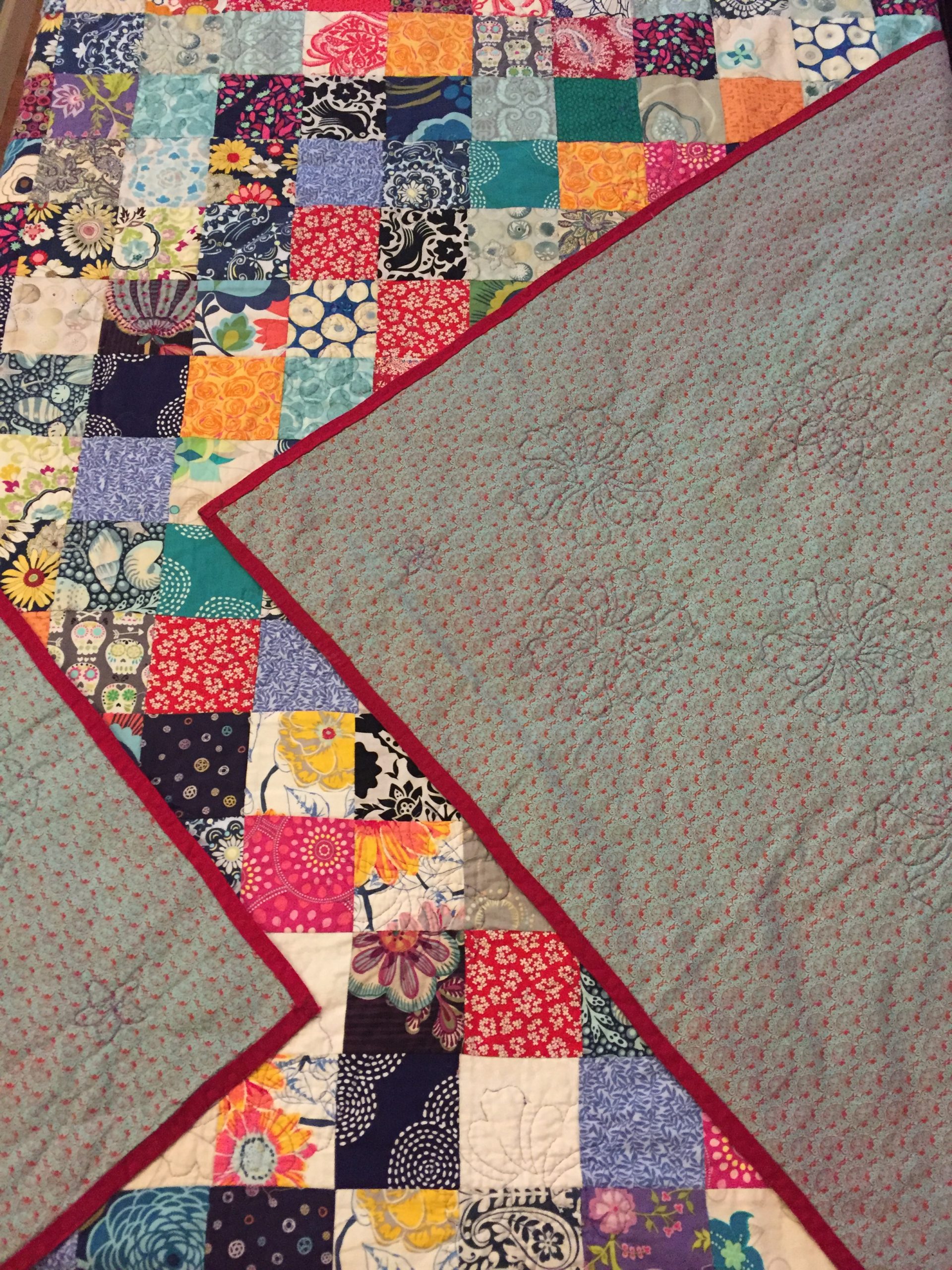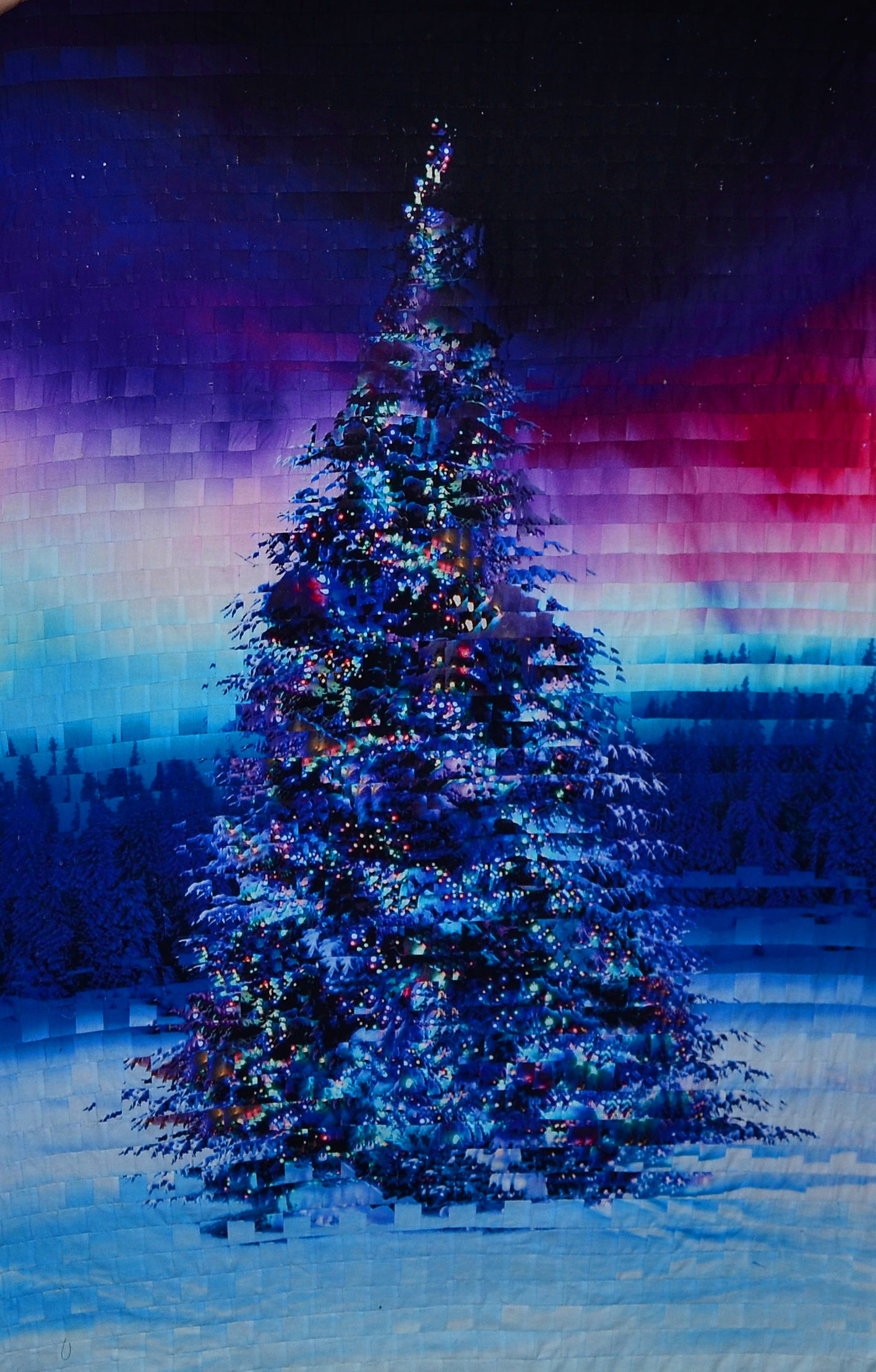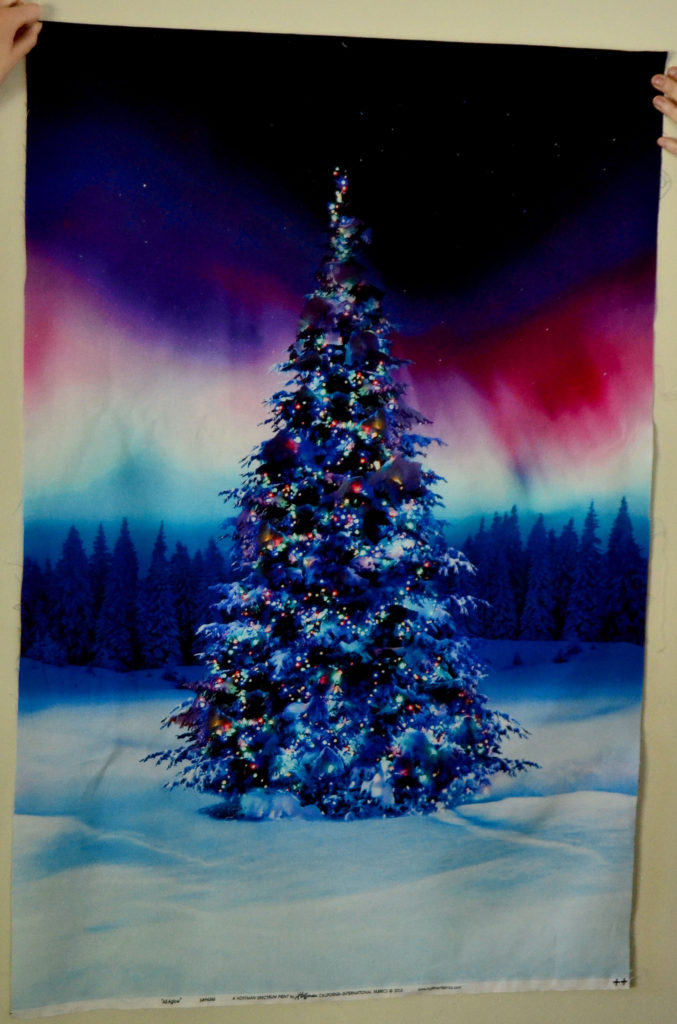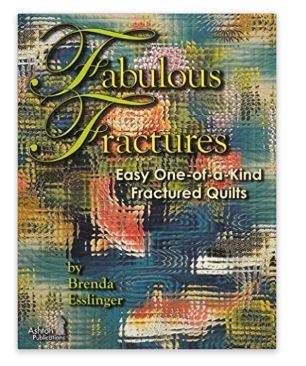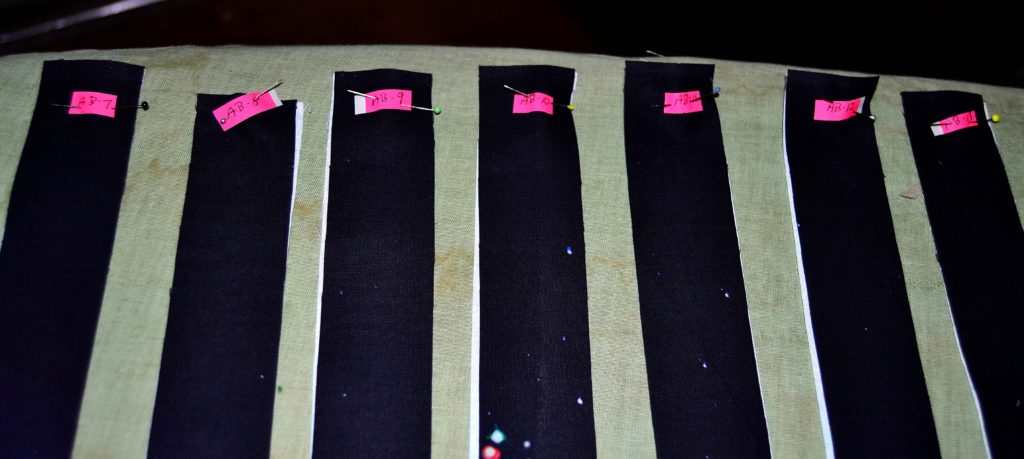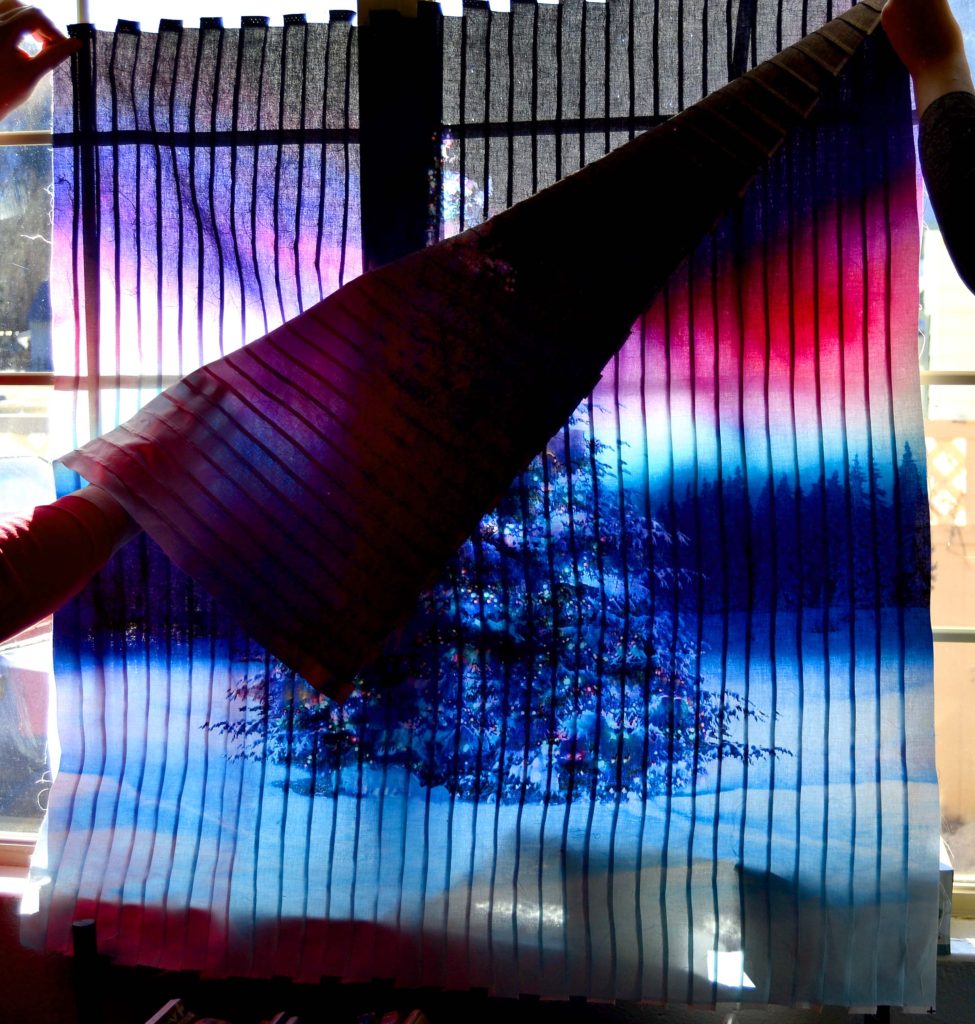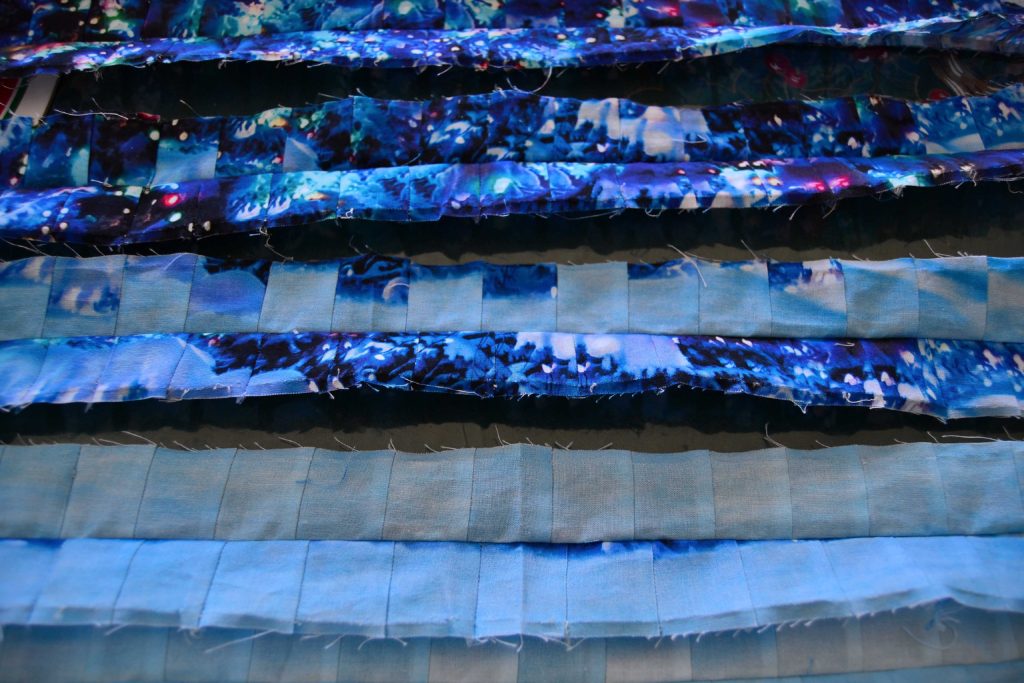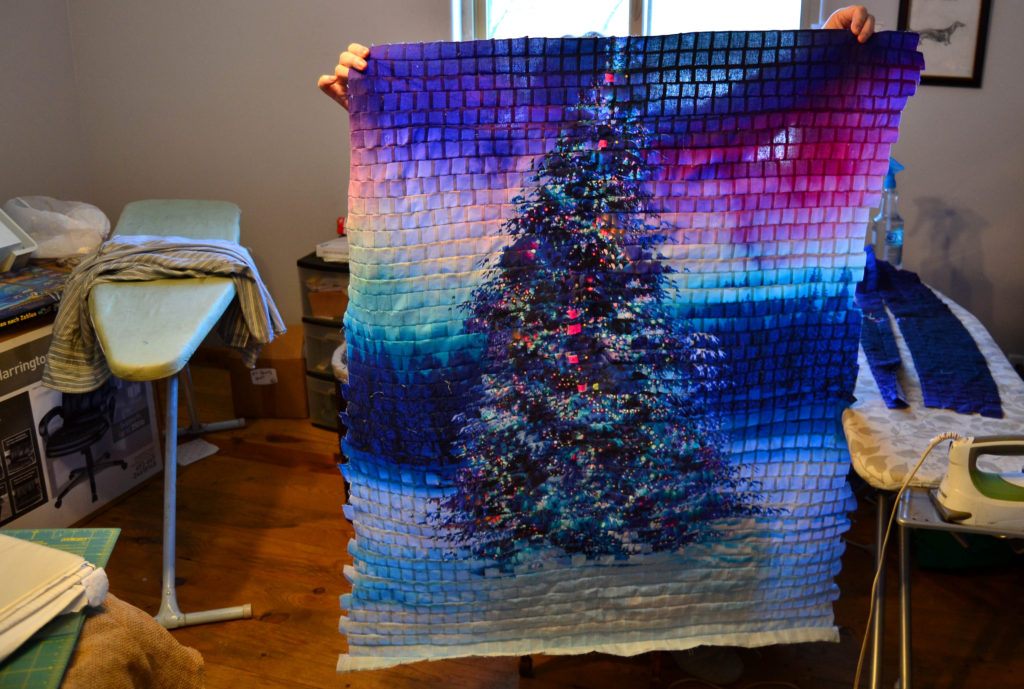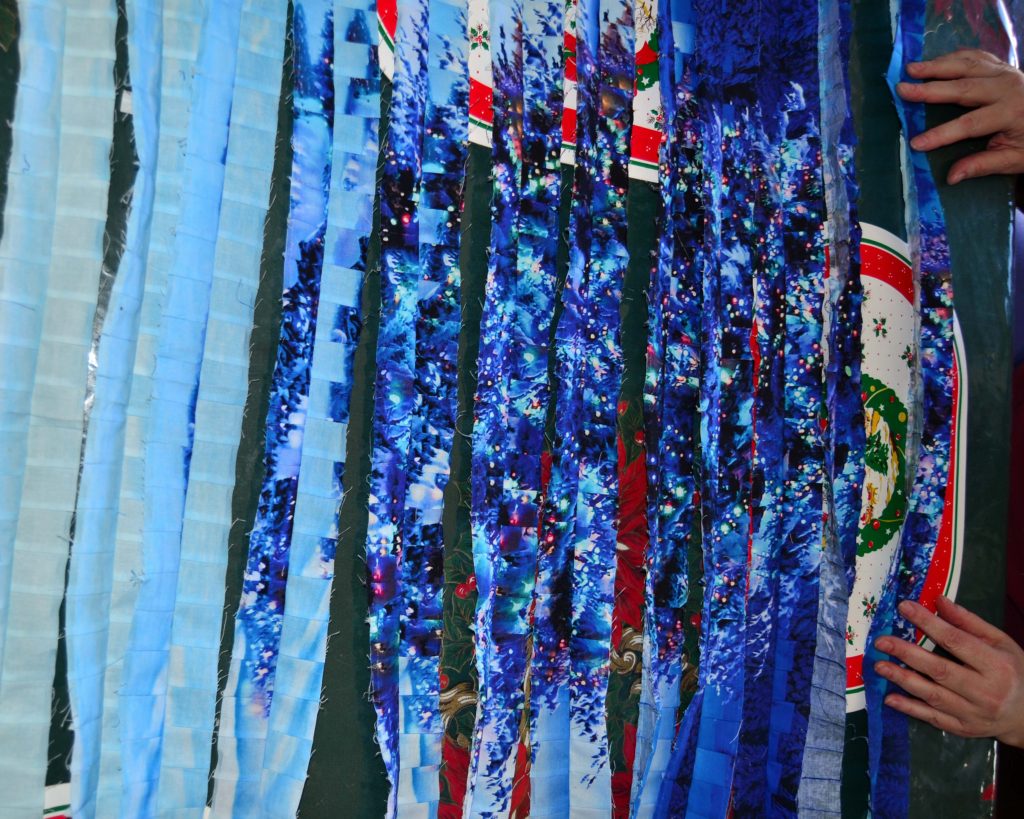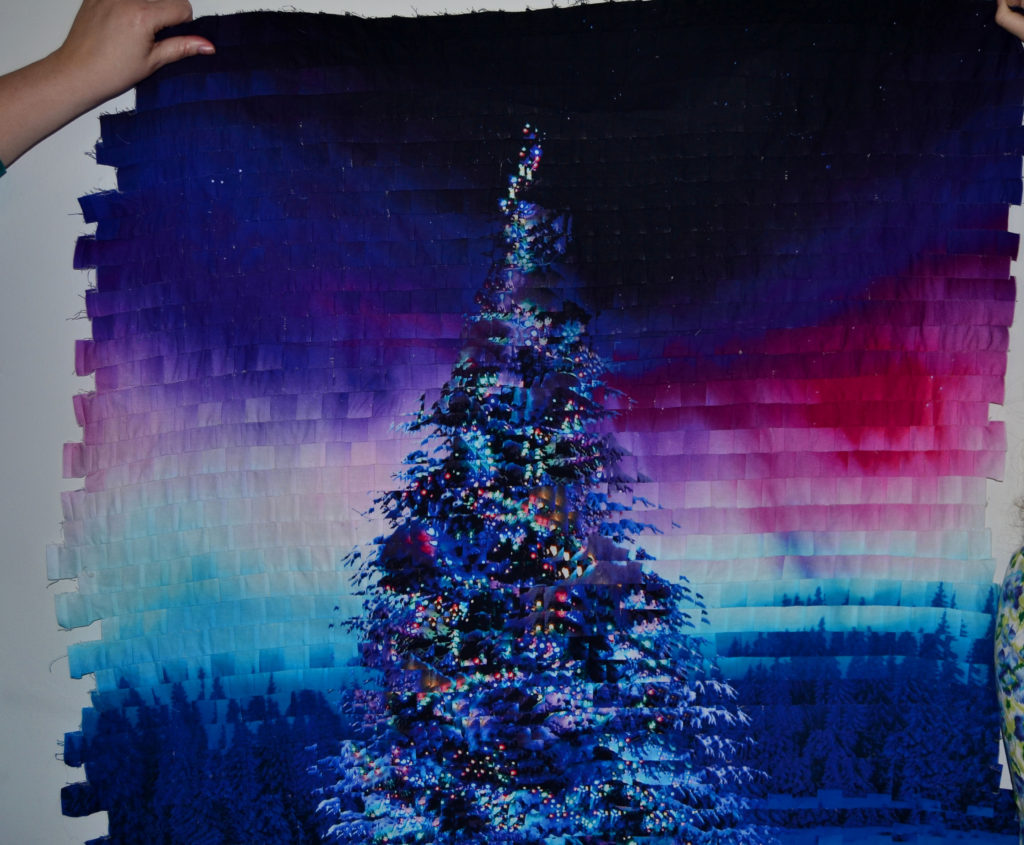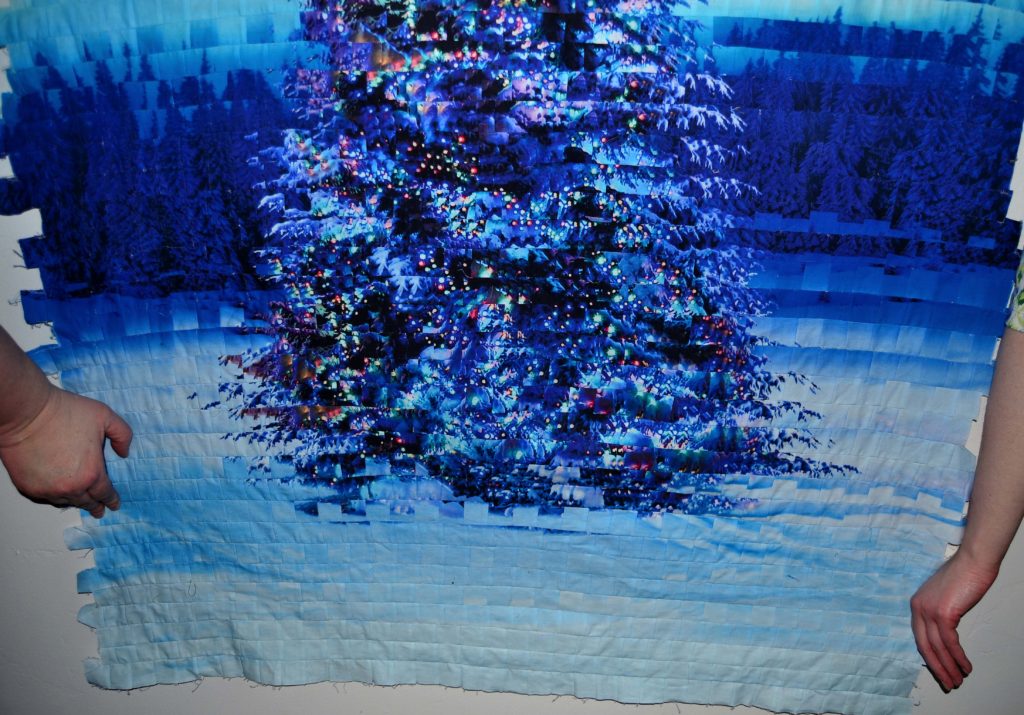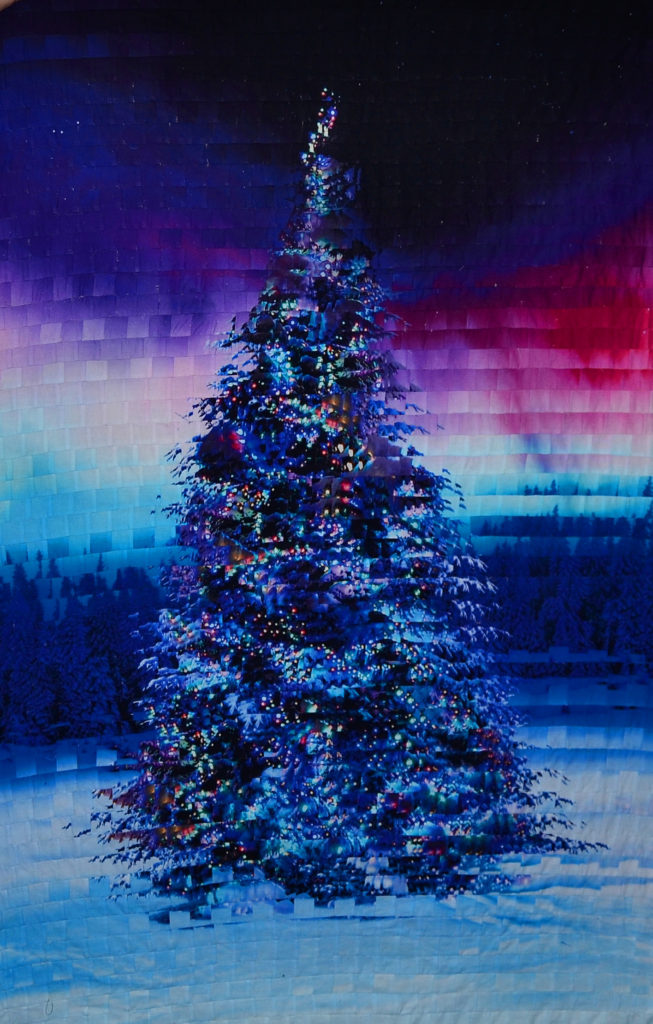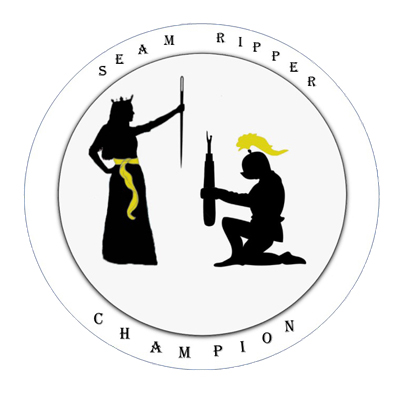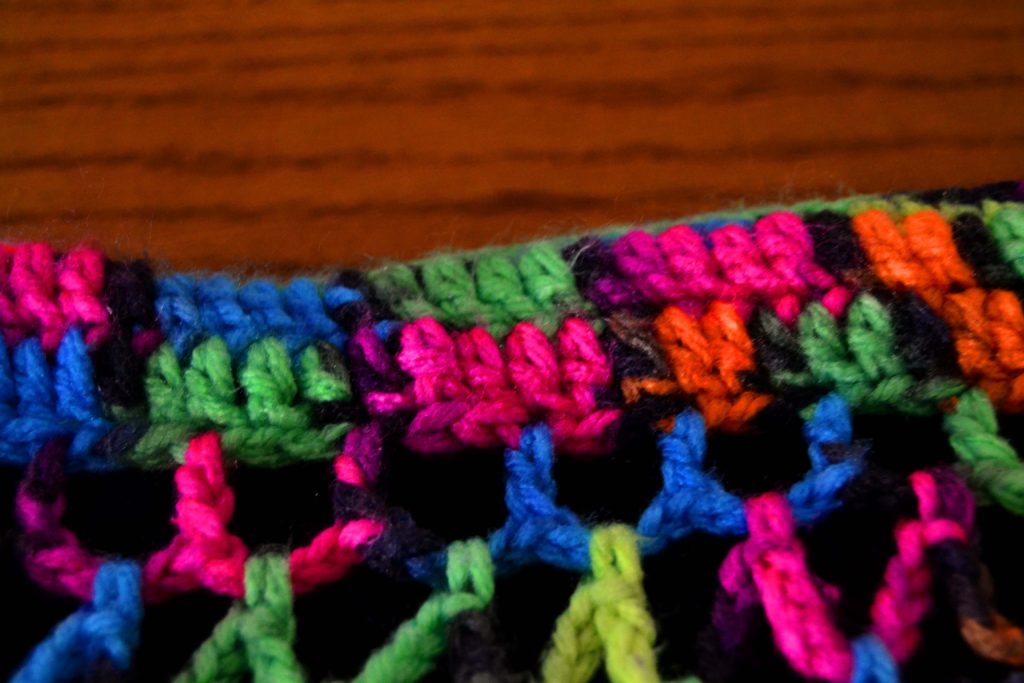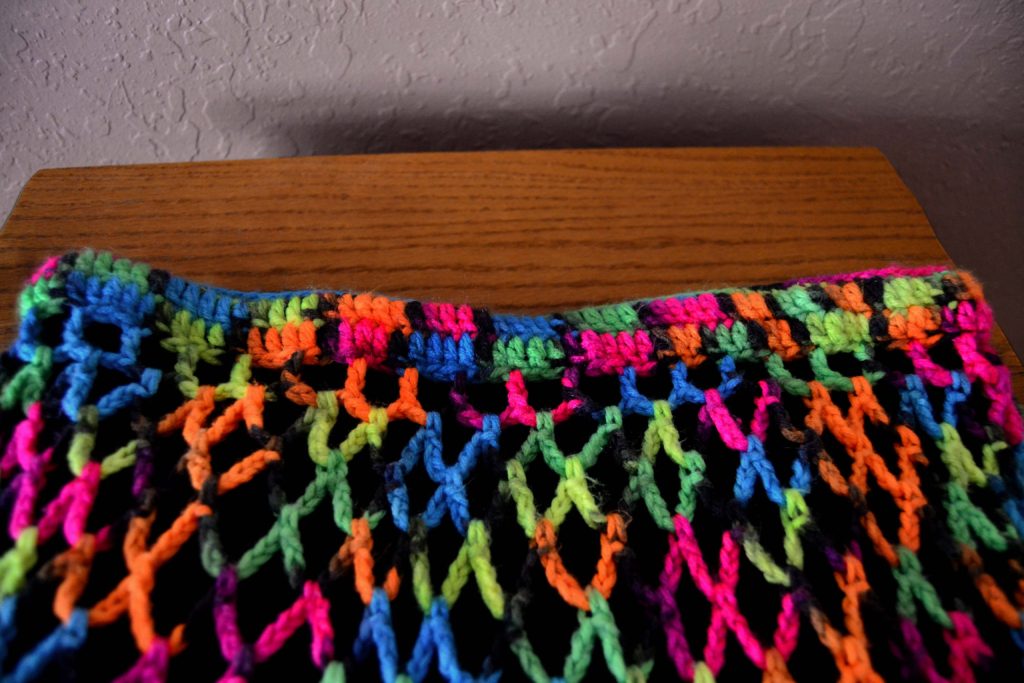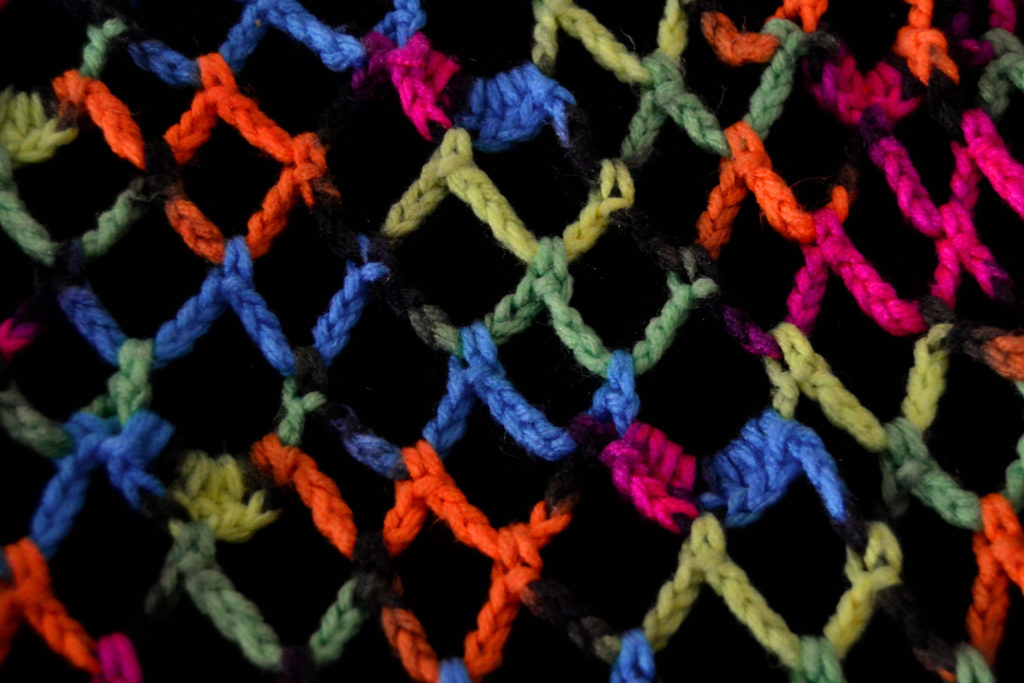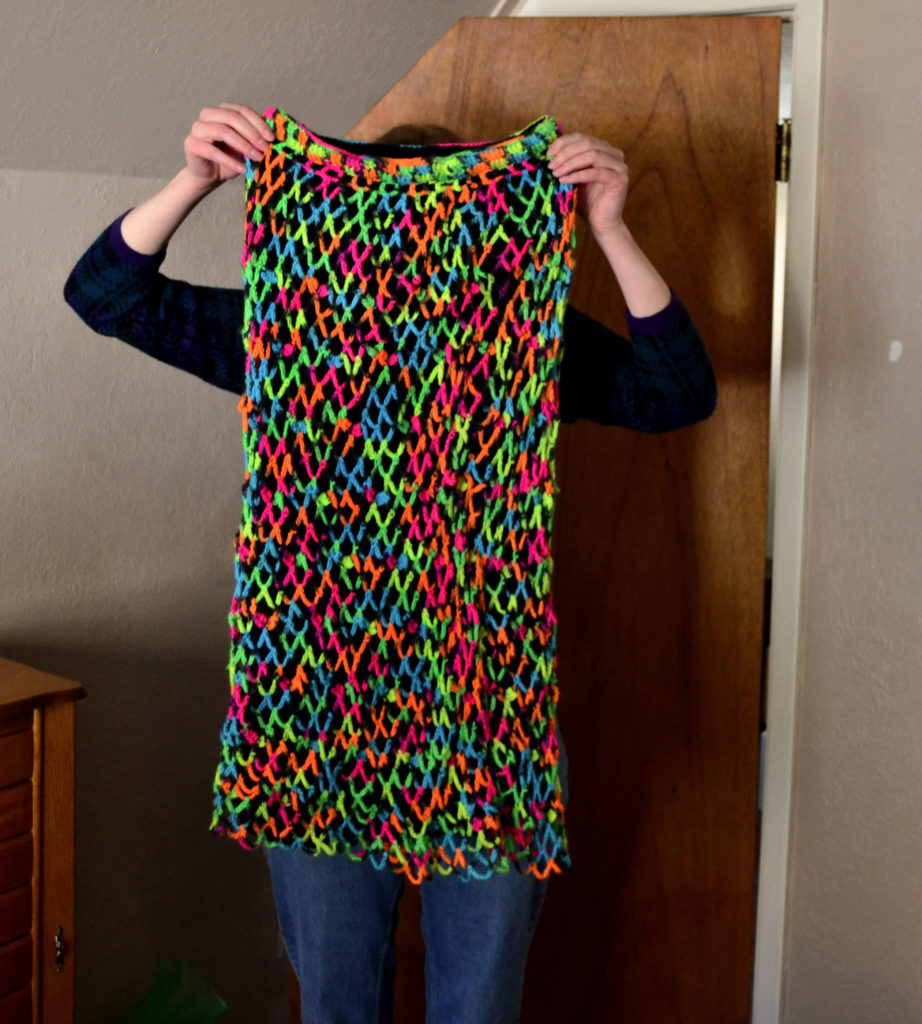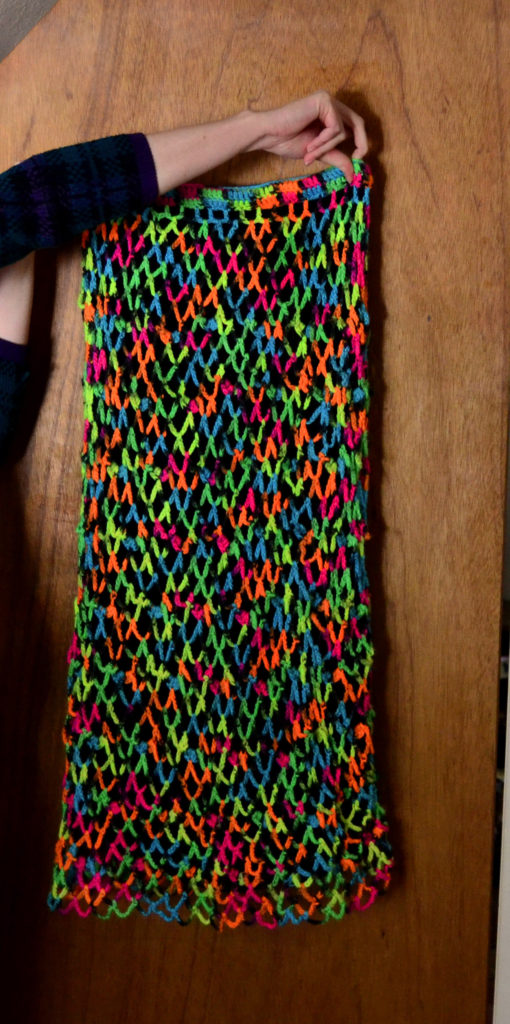Bree Reza is our latest Seam Ripper Champion – the absolute Master of Disaster for July-September 2019 – thanks to her honest, humorous, and true-to-life tale of fabric art inspiration, desperation, miseration, and triumpheration. Please join us in celebrating her for her “never say die” attitude, and her spirited view of life and art!
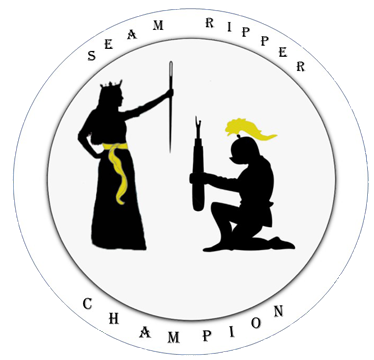
It began innocently enough. It always does, doesn’t it?
There was the catalog, glossy, fresh, colorful… and so much more appealing than dusting or doing the floors. And who doesn’t love looking through a spring catalog? All those bright rooms, with inviting quilts and pillows, and not a dog hair in sight.
So of course I sat down to flip through the pages. And there it was, around page 56. A black quilt, with bright, mismatched appliquéd circles evenly spaced. Cute enough to be funky, minimalist enough to feel a little modern. I was in love.
But no way was I $250 in love.
It looked simple enough. I’d done quilts before. It had been a while, and I didn’t have a sewing machine right now, but still. “I can make that.”
Mistake Number 1
You probably know that this is the first place that things went wrong. No pattern, no machine, no real plan. Just a little walk into the wilderness of my clothing donation bag.
I know you’ve got a bag like that in your closet. It’s a lot of fun, if you can avoid trying things on again. There were knits and crinkly rayon, silk and cotton, all of it in sizes that were a distant memory. And somewhere during the regret of trying on a pair of corduroy pants, I remembered that trying to wash and sew together such disparate fabrics was a recipe for disaster.

Bree Reza is a writer, crazy dog lady, and part time artist who loves wandering through the woods and taking on projects that provide “learning experiences.” She brings home the bacon by training dogs, writing fundraising copy and grant proposals, and creating custom stained glass panels. If you’d like to know more, you can check out her website at www.ClearWaterWords.com.
So I decided that I’d buy brand new fresh fabrics, all in cotton. Organic cotton! And organic batting! And I’d hand embroider flowers into it so that it could be reversible! Because if you’re going to do it, you should do it right!
Mistake Number 2
You might have guessed that is the second step where things started to go sideways. But I didn’t know that yet. So I put “fabric store” on my to-do list and went back to my busy routine.
It was just a lucky coincidence that I happened to walk by an organic fabric store while I was meeting my cousin for lunch one day. They had cute little pennants hanging in the front window. Owls made out of yarn. There was a happy dog tied up out front.
And inside, there was an astounding array of buttery soft patterns and textures. I was smitten. Flowers! Skulls! Paisleys! Dots! I heaped up yards and yards of quarters and carried them to the register. As the total soared, I felt a little dizzy. “It’s funny. It feels like altitude sickness. But not funny.”
Mistake Number 3
Mis-step number three: I gulped and handed them the credit card. $250 for the catalog was starting to look better, and I still had to buy batting, backing, and thread.
By this point, I was realizing that cutting out, spacing, and appliquéing a million little circles was going to be a real pain in the neck. So I decided that I’d just do squares. A Jacob’s Ladder pattern, maybe, like my grandmother used to love. Except that during the process of cutting out 6,358,192 squares, I started to get tired. “Random. They can be random. I wonder if that catalog still carries that quilt.”
Over the next two months, I cut a lot of 4-1/2 inch squares. And a few 3-1/2 inch squares by accident. And once or twice, my fingers, because working a rolling cutter at 2 am is a dicey business. I did come to my senses and borrow a sewing machine to sew them into strips and then sew the strips together.
But I was insistent that no two identical squares would touch. And as I got closer to connecting all the strips, there were a few times when the seam ripper came out and it all got patched back together. Eventually, I had a queen-sized topper, and I was pretty happy with it.
Mistake Number 4 (ish)
Now, to attach the batting and the backing. The October evenings were getting chilly, and the idea of sitting under a quilt, embroidering through the winter sounded lovely. “I’ll be done by January!” I was cheering as I pinned the last patch to anchor the layers together.
I used acrylic stencil templates as guides for the flowers. It took about 1.5-2 hours per flower. It didn’t take long to realize that when you have 13,965,653 four-inch squares, you’ll need more than a dozen flowers to hold it all together. I called quilting shops and looked online to see how much it would cost to have it quilted by someone else. Ruefully, I remembered the $250 price tag on the original quilt. And I went back to stitching flowers.
By now I think you can guess the hours of labor, love, and hate that went into making this “simple-looking” masterpiece!
January came and went. And June. And another January. And another June.
When I went to visit friends and family, the ragged roll of squares and stray threads trundled along with me. The stencils started to get a little crooked and wonky. I started sleeping under the unfinished quilt, dozing off as I finished a flower and crashed out in place. The edges were starting to look pretty frayed. The dogs decided that it was their quilt. And the world’s slowest wildflower bloom worked across the panels.
And finally, January came again.
Walking into the knitting group with my quilt, I expected the usual teasing. By this point, everybody was used to seeing my project. I spread it out in my lap and started stitching. When out hostess came by to refill my tea, she asked how it was going. I was so proud to hold it up… until I felt my skirt lift with it. I grimaced, the circle of ladies laughed, and the seam ripper came out again.
Mistake Number 47 or So
My stencils died, so I tried free-handing the flowers. More seam-ripping. But I made up flower stickers on my vinyl cutter, and those worked fine as templates. And after 4,238 flowers, I said, “That’s enough! If it falls apart, I don’t care!” The catalog had long since retired the quilt that inspired this whole mess, I was way over that budget, and I still didn’t have a finished quilt. This was craziness. And I definitely wasn’t in love anymore!
I borrowed a friend’s machine to do the binding, and was so proud to present the completed quilt. It seemed like there should have been trumpets, or a parade, or at least cake. It was a beautiful spring day, and at least the birds were celebrating with me.
My two best girlfriends dropped by to see the finished version. “Huh. That’s pretty.” they said. “Here’s a set of reusable fabric sandwich bags I made you. And a lunch bag.” And from the other one, “Here’s a couple of hats that I knitted and some cute boot toppers.” All that, of course, in addition to the other dozen projects they’d done while I was on the great quilt odyssey.

Somehow, I’d expected more than “That’s pretty.” But the dogs loved it. And after a washing, I had to admit that it was pretty. And I liked it. And that it would be at least another 10-15 years before I made another one.
I carefully folded it into the trunk for guests and sat down on the couch to rest. There was a catalog on the coffee table from the same company that started everything. And there, in the middle, was The Quilt. Now available with black or white backgrounds.
I checked the price, and thought, “You know, now that I’m back in practice, I could…” Which is when the angel of my better sense told me that I needed to get off my duff and walk the dog. And just drop that catalog in the recycling on my way out of the door.
Tips & Tricks
- Pencil it out. Some kits are overpriced – but some aren’t. Figuring out how much your supplies (and your time) will cost can save you a lot of time and frustration.
- Sewing machines save a lot of time!
- Using those acrylic stencils works (that’s how I did most of the quilting), but if the person has a vinyl cutter like a cricut (what I used) or a silhouette, you can make your own stickers to stitch around, and it’s so much easier. I drew up a quick 5 petal flower, made a pattern for it, printed them in different sizes, and was off to the races.
- Don’t be afraid to go it on your own. I had a disaster in many ways…but I ended up with a beautiful, unique quilt and a winning article! And there’s a whole lot of memories woven into the fabric of that quilt, as well.
Next Championship
We want to thank everyone who showed interest in this special, by-request-only, Seam Ripper Championship. We greatly appreciated the stories, and have enjoyed putting this one up.
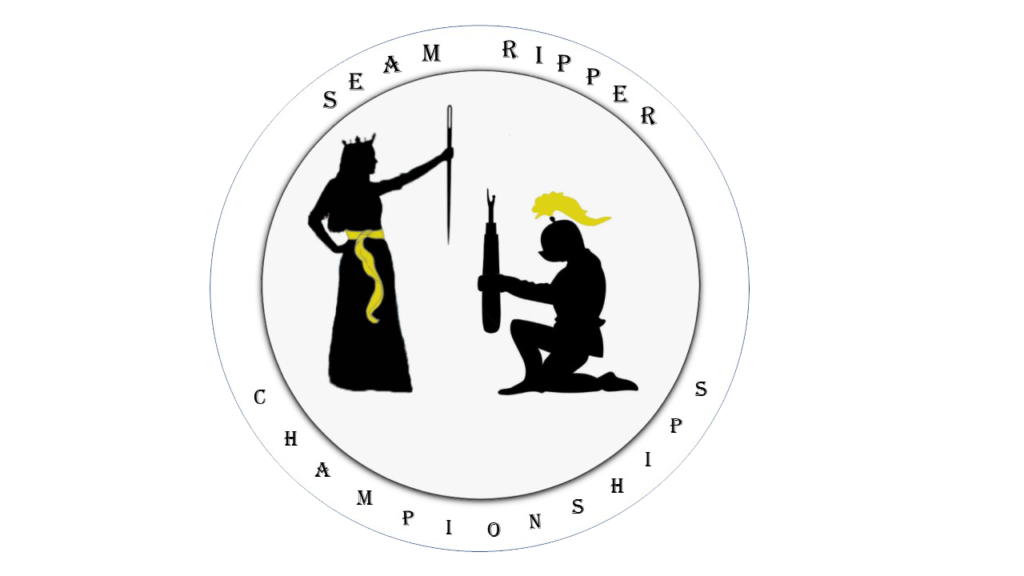
Our next championship will be reserved for members only – so please keep watching the page, and the newsletter, for more updates & details.
Speaking of which, please sign-up for our free newsletter, where you’ll receive the latest updates and also get notified in advance when we open up the next Championship!

